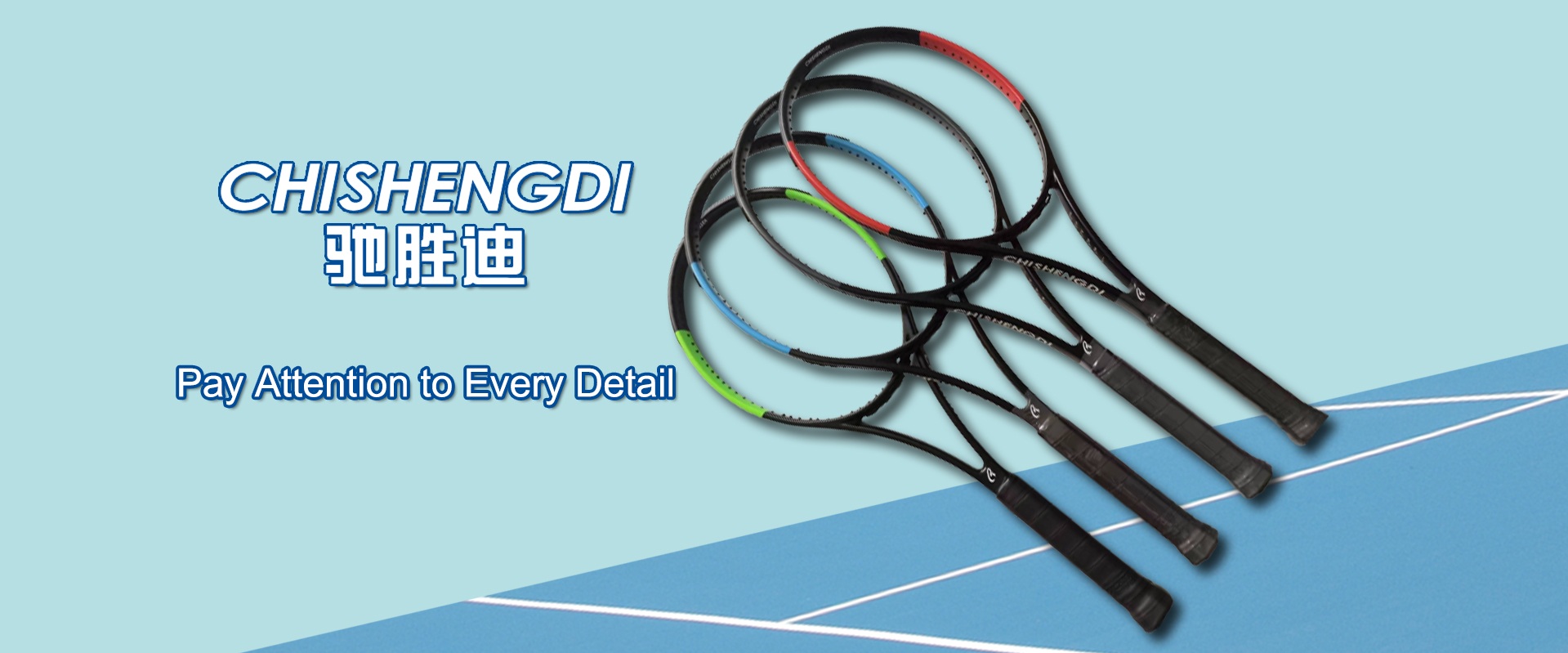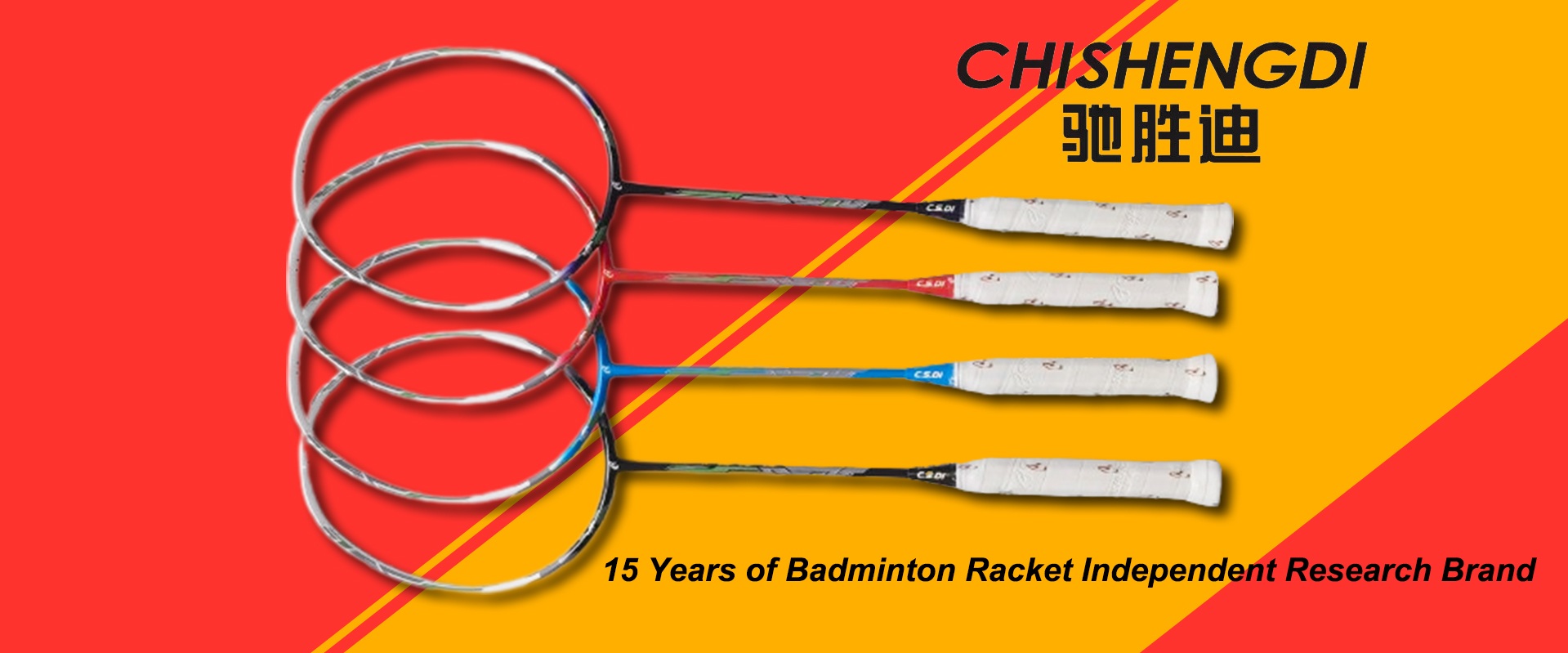+86-13959788969
Badminton racket is generally composed of racket head, racket rod, racket handle and racket frame and racket rod joint. The length of a racket is not more than 68 cm, in which the length of the racket handle and the racket stick is not more than 42 cm, the length of the racket frame is not more than 25 cm, and the width is 20 cm. With the development of science and technology, the development of the racket is toward the direction of lighter and lighter weight, harder and harder frame, better and better elasticity of the racket stick, and less and less air resistance.
Classification of badminton racket: Badminton racket is divided into short handle, medium handle and long handle racket. The short handle is about 40cm long and the middle handle is about 60cm long. The long handle is generally used by adults and the length is about 675mm.
Racket shape: is the geometric shape of the racket head. There are two types: the traditional round ISO with a square head. Mainstream rackets already use square rackets, which have a sweet area about 26% larger than round rackets.
Sweet area of the racket: is the best hitting area on the racket face. Most of the sweet area of the racket is near the fourth line of the horizontal line. When the hitting point is in the sweet zone, it can give you enough hitting power, ball control and little vibration. If the racket head is enlarged, the sweet zone will be larger and easier to control. However, increasing the racket head will bring negative effects in terms of torque and weight.
Racket torque: refers to when the racket hit, the racket face to produce torsion amplitude. The less torque the racket has, the more control it has over the ball.
Racquet weight: Each racquet should be marked with its weight, the general standard is U, 2U, 3U, 4U. Generally, the weight of all-carbon badminton rackets is mostly 2U(90-94 g) or 3U(85-89 g), 4U(80-84 g), while the weight of aluminum frame badminton rackets is generally above U(95-99 g), and there are a few all-carbon badminton rackets as low as 80 g.
Balance point: The balance point of the racket is closer to the racket head, which is called "head weight"; If the balance point of the racket is closer to the handle, it is called "head light". The balance point is generally measured from the bottom of the racket up in centimeters and inches. It is more suitable for defensive control players and speed players, because the continuous swing of the racket is much faster. With the progress of technology, many new rackets can have the same balance point without using counterweight through the control of the production process, which is also the basic requirement of good badminton rackets.
Racket Length: A standard badminton racket is 675 mm in length (plus base), but also 680 mm in length. The length of the racket handle generally has three specifications: 185MM, 190MM, 195MM. The advantages of lengthening the badminton racket are that it improves the hitting point and increases the flicker of the racket stick. However, lengthening the badminton racket is more likely to cause wrist and arm injury than ordinary badminton racket. Meanwhile, the flexibility of the badminton racket is also reduced, which is not conducive to dealing with close balls.
Racket frame section: The third semicircular section is the design of badminton racket transition from aluminum frame to all carbon. Its section shape is basically the same as that of aluminum frame racket, and the process is relatively easy to make. And the box section gives you better ball control. With the development of material science and technology, the use of a finer box section of badminton rackets more than the high-grade rackets, the purpose is to strive for faster hitting speed and better return control performance.
Racket joint: refers to the joint between the racket frame and the racket stick, which has T shape and Y shape from the appearance, and has internal and external from the process. The all-carbon badminton racket used is one body in appearance (no joint can be seen), but in fact, most of them use the built-in joint, only a few racket adopts the jointless process, the disadvantage of no joint is the poor torque of the racket. The frame and rod are made separately and then connected with a joint, allowing for better control over the quality, weight and balance of the racket. The external joint is good in strength and torque.
Racket material: Aluminum alloy has been adopted since the 1970s, and a large number of new materials, such as carbon fiber, titanium alloy, high strength carbon fiber, etc. These new materials are lighter, stronger and more durable, absorbing more vibration and shock, and giving racquet makers more leeway in designing the hardness, feel and performance of the racket.










